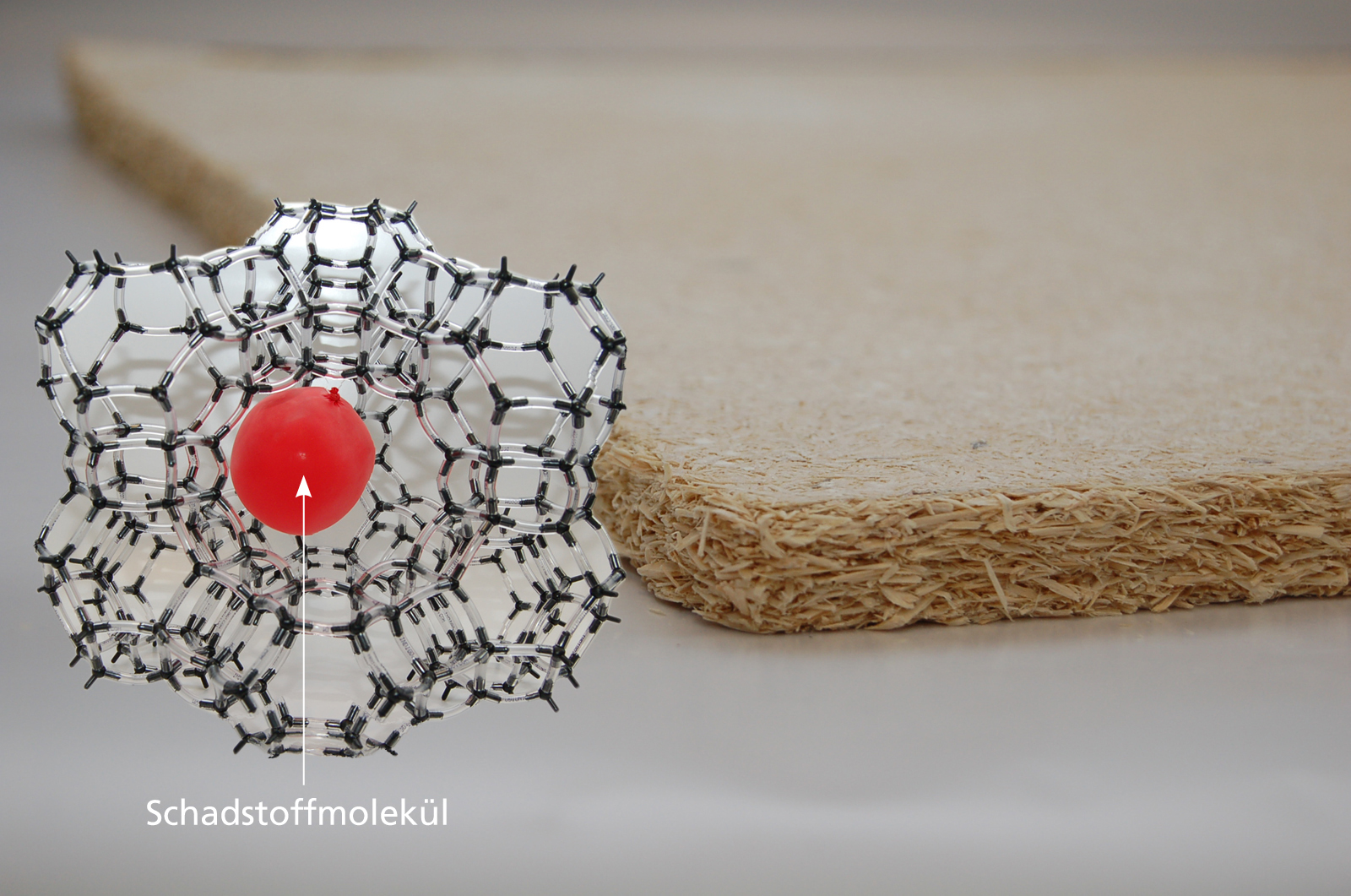Minerals provide better indoor air
One of the sources of emission for pollutants in living spaces are particleboards glued with adhesives that contain formaldehyde. There is a new method that will now provide another way to reduce these vapors. The trick can be found in special minerals that equip wood materials with properties for cleaning air in living spaces.
Since the 50s, formaldehyde has been the basic material for many artificial resins and glues used in particleboards and plywood boards. Estimates indicate that more than 85 percent of all wood materials have adhesives containing formaldehyde. This substance escapes from the materials and, along with other sources, pollutes indoor air. This is why numerous ways have been developed to reduce emissions, and the International Agency for Research on Cancer (IARC) of the World Health Organization WHO has even classified formaldehyde as carcinogenic for humans. Thereupon both the existing threshold value of 0.1 ppm issued by Germany’s then-Federal Health Office in 1977 and WHO’s standard value of 100 micrograms per cubic meter (µg/m³) have been confirmed.
Researchers at the Fraunhofer Institute for Wood Research, Wilhelm-Klauditz-Institut WKI in Braunschweig, Germany, and the Fraunhofer Institute for Silicate Research ISC in Würzburg, Germany, have found a new method to reduce formaldehyde emissions from particleboard: modified zeolites. These are aluminosilicates that function as a molecular sieve due to their extremely large inner surface and porous structure so that they can absorb formaldehyde particularly well. Dr. Katrin Bokelmann ought to know because she is the project manager at the Fraunhofer Institute for Silicate Research who, along with her team, is in charge of manufacturing mineral compounds. As she puts it: “Zeolites are already used as a filling material in particleboards, but it’s an entirely new idea to use them for adsorbing pollutants in wood materials.”
The researchers were not able to achieve sufficiently high rates of adsorption in their tests of various commercially available or natural minerals. The best adsorption properties of these aluminosilicates were measured in synthetic zeolite Y, which the experts modified and improved with amino groups. Dr. Jan Gunschera is the project manager at the Fraunhofer Institute for Wood Research and this is how he sees it: “We noticed a 70 percent boost in the adsorption rate after we added formaldehyde to the processed material in our measuring chambers and then we put five percent by weight of the zeolite powder directly into our sample particleboards made of spruce roundwood. The result was that formaldehyde emissions from the board dropped 40 percent – both short-term and long-term tests of one month confirm these findings. In other words, the air in living spaces should be measurably improved. Our tests indicate that this technology can even reduce indoor air pollutant levels.” The properties of the wood materials did not undergo any negative influence from the zeolites, it was reported.
The researchers have applied for a patent for the new technique and think that modified zeolites – worked into furniture or ceiling panels – could conceivably reduce not only formaldehyde but also other aldehyde levels in indoor air. Scientists are currently looking for partners from the wood materials industry to mass-produce particleboards. A sample panel is on display at the Bau fair in Munich, Germany, from January 17 to 22 at Fraunhofer’s joint stand 131 in Hall C2.
